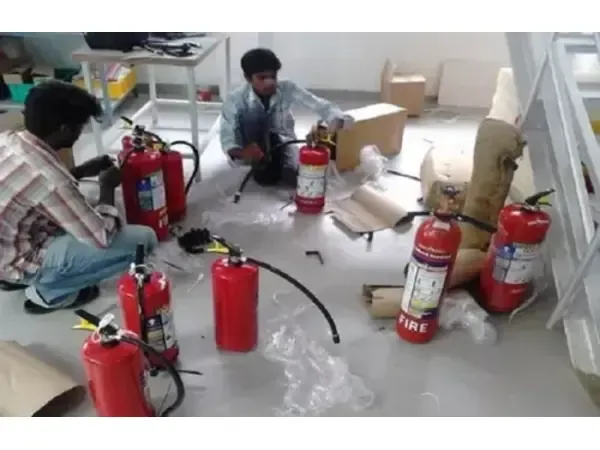
Across Delhi, we are rending the best PAN India fire extinguisher maintenance service from 2019. We are an esteemed company where you can avail of the service for both PAN India and local level. Our company has well-trained technicians who make sure to provide the best service to satisfy multiple ranges of customers. We have deployed technologically updated procedures and systems to make sure that maintenance service is carried out accurately. You can trust our services fully as we are an ISO-certified and MSME-registered company.
Once the service agreement is signed, we will schedule the maintenance visit. We will assign qualified technicians to inspect and service your fire extinguishers. Coordinate with us to find convenient dates and times for the visits that minimize disruption to your operations. During each maintenance visit, our technicians will conduct a thorough inspection of your fire extinguishers. We will check for any signs of damage, corrosion, or wear and tear. Additionally, they will test the functionality of the extinguishers, including the pressure, seals, and discharge mechanisms, to ensure they are in proper working condition.
Here are some key features of AM Fire Solution as a Pan India fire extinguisher maintenance provider,
Fire extinguishers should undergo inspection at least once a month. Visual checks should be performed to ensure that extinguishers are in their designated locations, accessible, and not obstructed. It is recommended to shake your dry chemical extinguishers once a month to prevent the powder from settling. We check for any damage like dents, cracks, or rust to the outside of the extinguisher. The maintenance includes inspection, hydro pressure testing, refilling, and replacement. Proper inspection and maintenance ensure that the fire extinguishers are effective in a fire hazard.
Regular inspection of fire extinguishers shall include a check of least the following items:
⦁ Location in the designated place
⦁ Visibility & accessibility of the extinguisher in the right place
⦁ Pressure gauge reading or indicator in the operable range
⦁ Safety pin and tamper seal is in place
⦁ Fullness is determined by weighing
⦁ Condition of the cylinder body, valve assembly, hose, and nozzle.